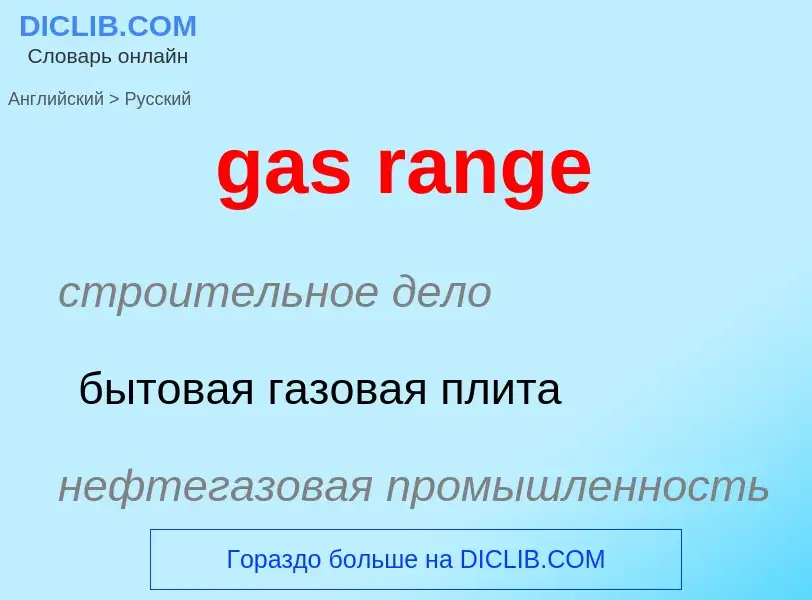Tradução e análise de palavras por inteligência artificial ChatGPT
Nesta página você pode obter uma análise detalhada de uma palavra ou frase, produzida usando a melhor tecnologia de inteligência artificial até o momento:
- como a palavra é usada
- frequência de uso
- é usado com mais frequência na fala oral ou escrita
- opções de tradução de palavras
- exemplos de uso (várias frases com tradução)
- etimologia
gas range - tradução para russo
строительное дело
бытовая газовая плита
нефтегазовая промышленность
газовая плита
Definição
Wikipédia

A gas stove is a stove that is fuelled by combustible gas such as syngas, natural gas, propane, butane, liquefied petroleum gas or other flammable gas. Before the advent of gas, cooking stoves relied on solid fuels such as coal or wood. The first gas stoves were developed in the 1820s and a gas stove factory was established in England in 1836. This new cooking technology had the advantage of being easily adjustable and could be turned off when not in use. The gas stove, however, did not become a commercial success until the 1880s, by which time supplies of piped gas were available in cities and large towns in Britain. The stoves became widespread on the European Continent and in the United States in the early 20th century.
Gas stoves became more common when the oven was integrated into the base and the size was reduced to better fit in with the rest of the kitchen furniture. By the 1910s, producers started to enamel their gas stoves for easier cleaning. Ignition of the gas was originally by match and this was followed by the more convenient pilot light. This had the disadvantage of continually consuming gas. The oven still needed to be lit by match and accidentally turning on the gas without igniting it could lead to an explosion. To prevent these types of accidents, oven manufacturers developed and installed a safety valve called a flame failure device for gas hobs (cooktops) and ovens. Most modern gas stoves have electronic ignition, automatic timers for the oven and extractor hoods to remove fumes.
Gas stoves are a significant source of indoor air pollution, and require good ventilation to maintain acceptable air quality. They have been linked to increases in the rate of asthma in children, although these studies may be at odds with an earlier one in 2013. Gas stoves also release methane. Research in 2022 estimated that the methane emissions from gas stoves in the United States were equivalent to the greenhouse gas emissions of 500,000 cars. About 80% of methane emissions were found to occur even when stoves are turned off, as the result of tiny leaks in gas lines and fittings. Although methane contains less carbon than other fuels, gas venting and unintended fugitive emissions throughout the supply chain results in natural gas having a similar carbon footprint to other fossil fuels overall.



![blue]] [[flame]] colour, meaning complete combustion, as with other gas appliances. blue]] [[flame]] colour, meaning complete combustion, as with other gas appliances.](https://commons.wikimedia.org/wiki/Special:FilePath/Gas oven flame.jpg?width=200)
![Early gas stoves produced by Windsor. From ''[[Mrs Beeton's Book of Household Management]]'', 1904. Early gas stoves produced by Windsor. From ''[[Mrs Beeton's Book of Household Management]]'', 1904.](https://commons.wikimedia.org/wiki/Special:FilePath/Gas stove 1851.jpg?width=200)
.jpg?width=200)
